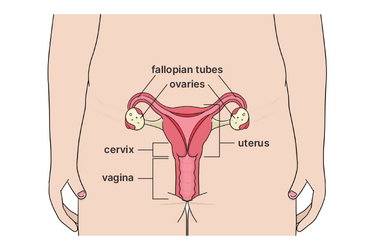On this page, you’ll find information about cervical cancer, including screening, symptoms, causes and treatments.
What is cervical cancer?
Can you screen for cervical cancer?
Symptoms of cervical cancer
Causes of cervical cancer
Can you reduce the risk of cervical cancer?
How is cervical cancer diagnosed?
Treatments for cervical cancer
When to see your doctor about cervical screening
Online resources about cervical cancer
Cervical cancer develops in the cervix (the entrance to the uterus). This cancer is usually caused by the human papillomavirus (HPV). Learn more about HPV on the Cancer Council website.
Cervical cancer can start in the squamous or glandular cells. Some cervical cancers have both squamous and glandular cells. Cancer in the squamous cells is the most common type of cervical cancer.
Cervical cancer is more common in people over 30, although it can occur at any age.

Yes, you can. It’s important to have regular cervical screening tests to check for the presence of the human papillomavirus (HPV). Regular screening prevents 9 out of 10 cervical cancers.
HPV is a common sexually transmitted infection (STI) that can affect the surface of the cervix, vagina and vulva.
The best time to get immunised against HPV is before you become sexually active. Under the National Immunisation Program, a free HPV vaccine is given to people aged 12 to 13 at school.
For more information about the HPV vaccine, see your doctor or visit the Australian Government Department of Health and Aged Care website.
If you have been vaccinated for HPV, it’s still important to get regular cervical screening tests. While the HPV vaccine is highly effective, it doesn’t prevent all HPV infections.
You might not have any symptoms of cervical cancer, especially in the early stages. But symptoms can include:
Symptoms of advanced cervical cancer include:
Talk to your doctor if you are worried about any of these symptoms. They may not be due to cancer, but it’s important to check.
Cervical cancer is almost always caused by the human papillomavirus (HPV). HPV is a common sexually transmitted infection (STI) that can affect the surface of the cervix, vagina and vulva.
About 80% of women will have the virus at some point in their lives, but many don’t know they've been exposed to the infection.
Most women with the infection don’t develop cervical cancer. Only certain types of HPV cause cancer.
Cervical cancer usually develops many years after the HPV infection occurs.
You can reduce your risk of cervical cancer by:
A cervical screening test will check for the human papillomavirus (HPV). If HPV is not detected, you can wait 5 years until your next test.
If you have an abnormal test result, you may need further tests, such as a second cervical screening test or a colposcopy. A colposcopy is when an instrument is used to look closely at your cervix and check for abnormal cells. During the procedure, tissue samples are taken for testing.
If abnormal or cancerous cells are detected, your doctor will refer you to a cancer specialist for treatment.
If precancerous cells are detected, your doctor may recommend:
If you are diagnosed with cervical cancer, your doctor may recommend:
Some cancer treatments, such as chemotherapy and radiotherapy, can cause menopause. Learn more about medically induced menopause.
See your doctor for regular cervical screening tests. You can also ask your doctor about the HPV vaccine if you haven’t already had it.
It’s important to see your doctor if you notice any symptoms of cervical cancer. As with many cancers, early detection leads to the best treatment outcomes.
More information about cervical cancer can be found on the following websites:
For more information about cervical screening and the HPV vaccine, visit the Cancer Council cervical screening web page.
If you would like to speak to a nurse for general information and support, call Cancer Council on 13 11 20 (9 am to 5 pm, Monday to Friday).
Download our cervical screening fact sheet in English and translated into other languages.
This content has been reviewed by a group of medical subject matter experts, in accordance with Jean Hailes policy.
© Jean Hailes Foundation. All rights reserved.